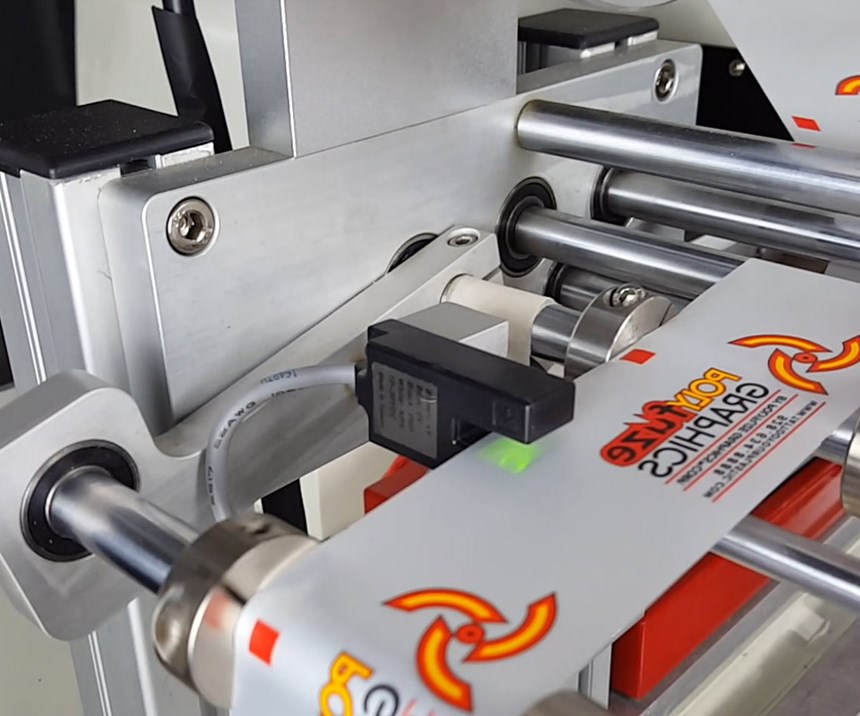Game-Changing Permanent Labeling Technology for Polyolefins Gets Traction
MIGS’ innovative VersaFlex Labeling System is being adopted by key machine makers for decorating blow molded, injection molded, thermoformed and rotationally molded products.
An innovation that promises to advance, if not revolutionize, the technology of permanent labeling for a broad range of low-surface-energy (LSE) polyolefin blow molded, injection molded, thermoformed, and rotationally molded parts has been developed by Molding In Graphic Systems (MIGS; Clarksdale, Ariz.). Moreover, MIGS’ VersaFlex system already is being adopted by key decorating equipment makers. Included are AutoTran. Inc., United Silicone, Trekk Equipment Group, Hasting Advance Decorating Systems, and Casco Machines, all of whom are committed to developing machines that incorporate MIGS’ system.
MIGS made its mark over three decades ago in permanent labeling of rotationally molded polyolefins and has made significant strides in the injection molding arena since 2012.
The new VersaFlex Labeling System has two components: MIGS’ specialty Polyfuze pigmented polymer graphics and a new customized flexible heating die assembly, with a proprietary heat-retaining component that applies permanent graphics, explains CEO Marty Mares. As previously reported by PT, the Polyfuze graphics decoration process for injection molded plastics simply requires the use of a standard hot-stamp machine and an 80-durometer silicon die to fuse the graphic permanently into the part to become one piece. No adhesives, inks, clear coats nor surface pre-treatments are required with this unique secondary process. And while the graphics may look like a heat transfer or hot stamp foil, the polymer-based material that comprises Polyfuze graphics has been shown to vastly outperform these traditional alternatives.
The new proprietary heating element utilizes a 40-durometer flexible silicone pad print pad on “modified pad printing machines” which essentially pick up heat instead of ink—explains MIGS’ senior director Jason Brownell. Essentially, VersaFlex requires a new generation of special machines—and, as noted above, MIGS has been working with a variety of manufacturers to adopt this technology.
At its headquarters, MIGS has worked with a modified AutoTran pad printer to prove its technology, which has the capability of permanently marking hollow parts with small openings that do not allow for support on the inside wall. In addition, Brownell notes that whereas application of hot-stamp foils or heat transfers requires pressure of 400-500 psi, VersaFlex only requires 25 psi. Says Brownell, “You can decorate larger areas with smaller machines. You’re basically eliminating the air and allowing the heat in. The AutoTran machine we’re using has a hot plate that we run at 450 F.”
Mares notes that Polyfuze heat-melded durability exceed IMLs, stickers, foils and more, adding that this is the only “pure fusion” technology for LSE polyolefin products globally, to his knowledge. “The VersaFlex Labeling System is designed for flat, curved or multi-shaped LSE polyolefin parts. It saves time, money and scrap—using one label once—and not having to replace it due to failure means protection against litigation.”
Related Content
-
ABC Technologies to Acquire Windsor Mold Group Technologies
The Tier One automotive supplier with compounding and blowmolding machine capabilities adds the 50-yr-old molder and moldmaker.
-
What to Look for in High-Speed Automation for Pipette Production
Automation is a must-have for molders of pipettes. Make sure your supplier provides assurances of throughput and output, manpower utilization, floor space consumption and payback period.
-
How to Optimize Injection Molding of PHA and PHA/PLA Blends
Here are processing guidelines aimed at both getting the PHA resin into the process without degrading it, and reducing residence time at melt temperatures.


















